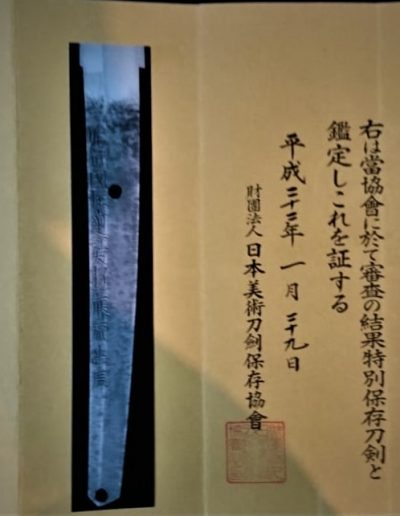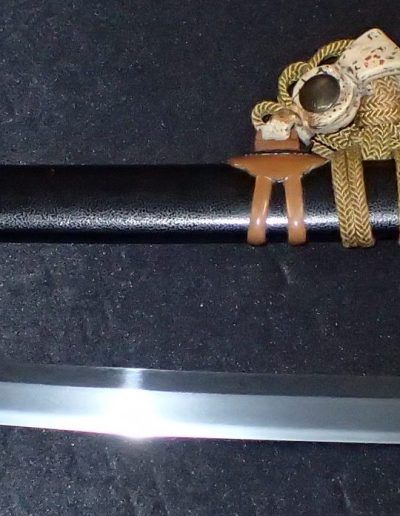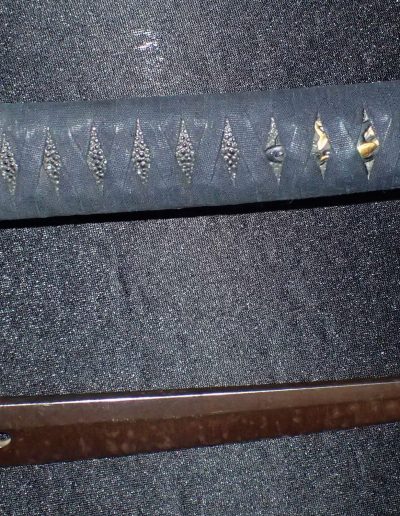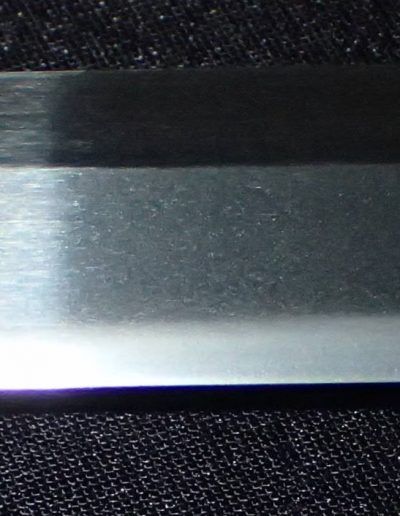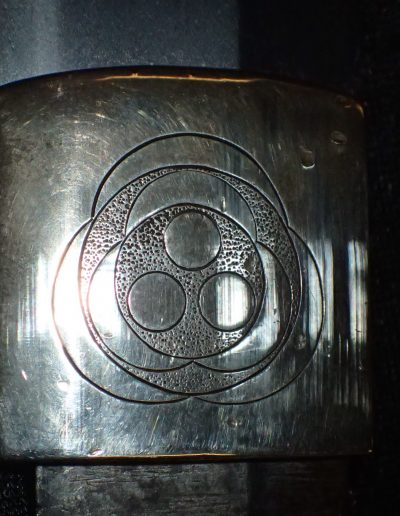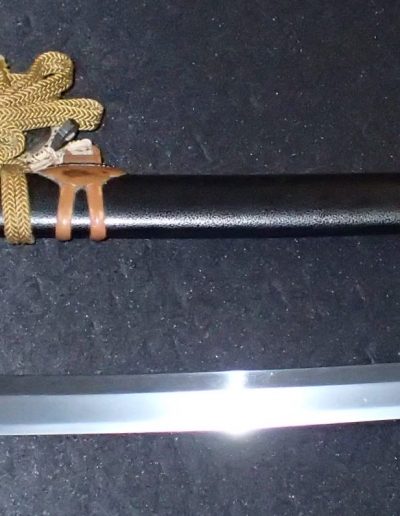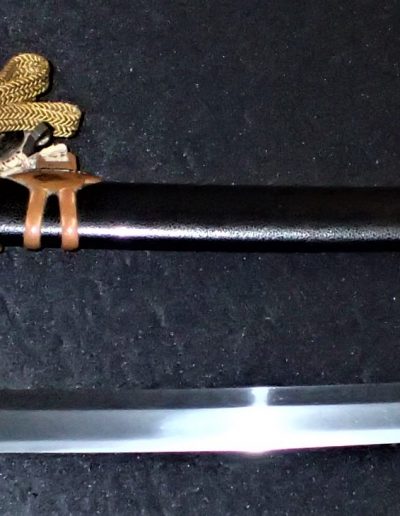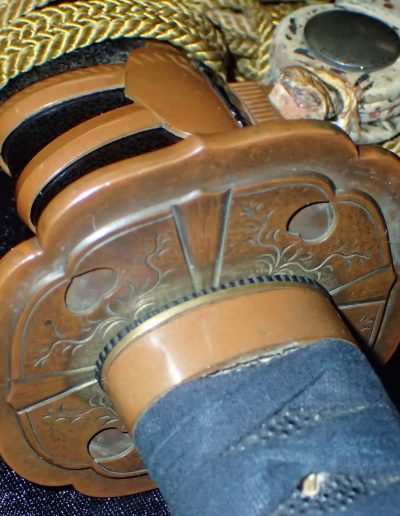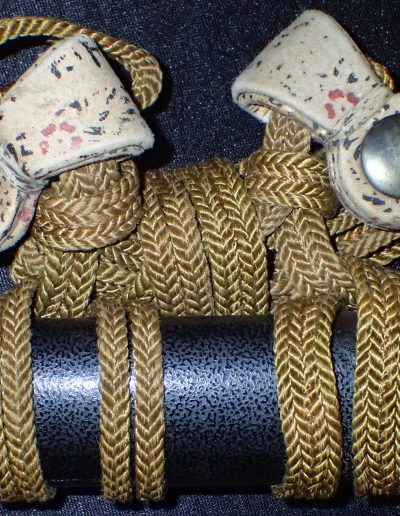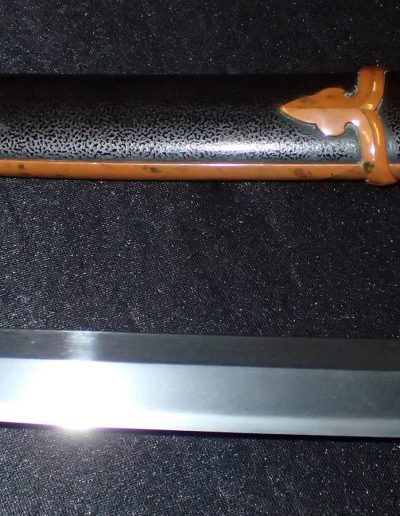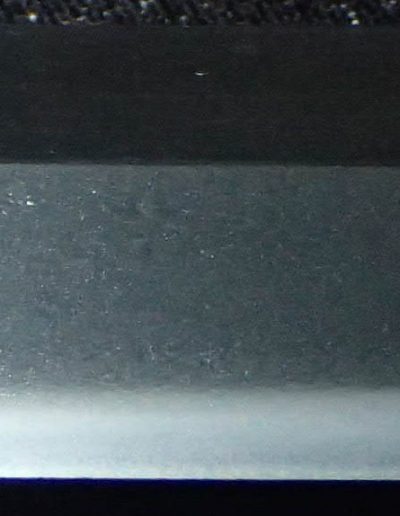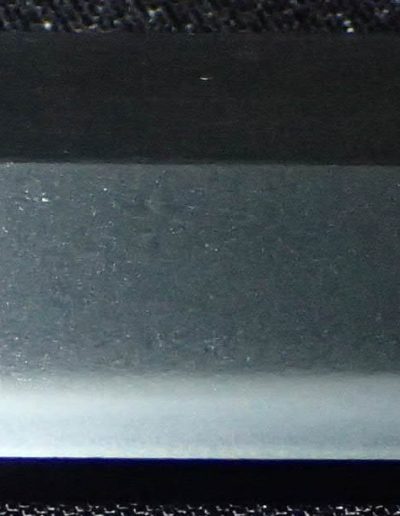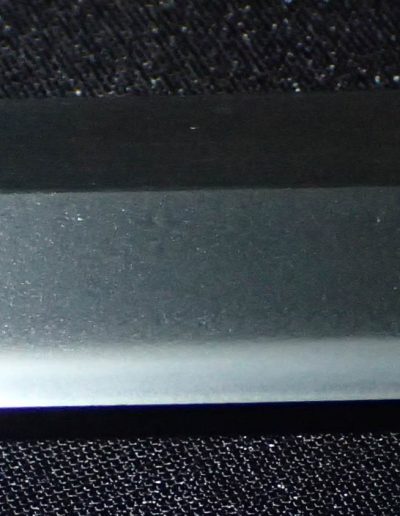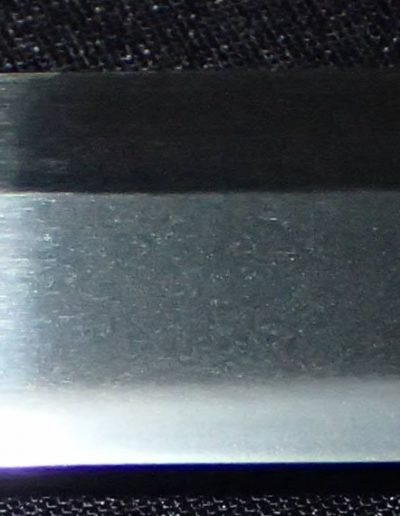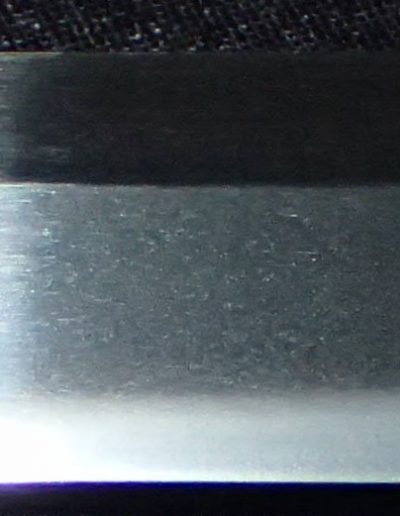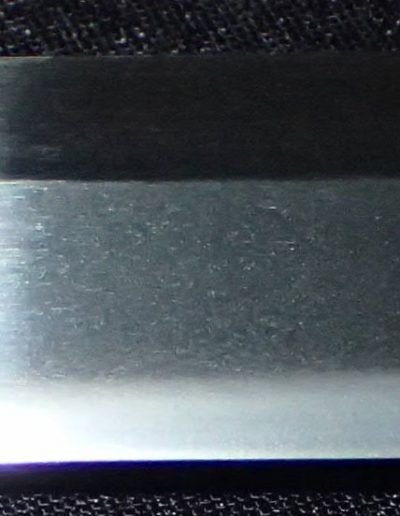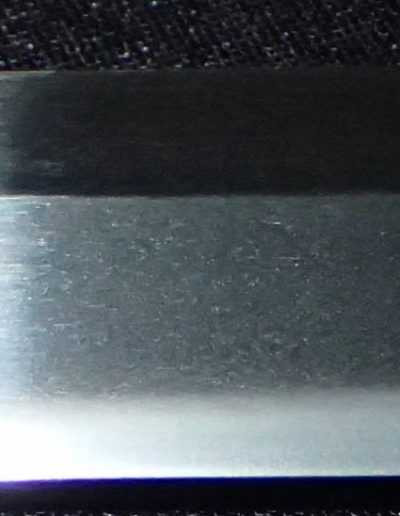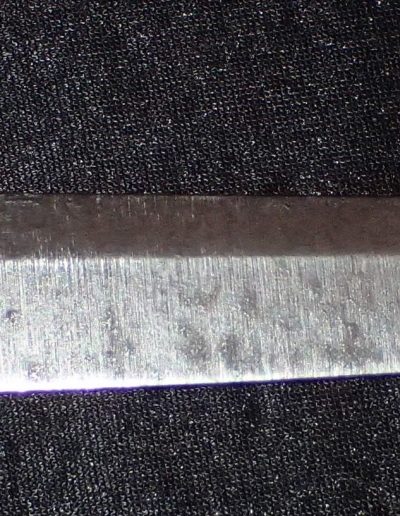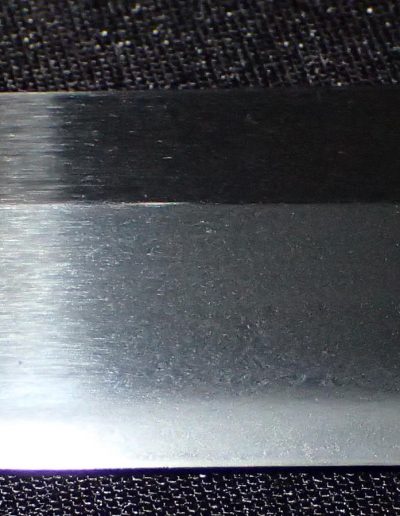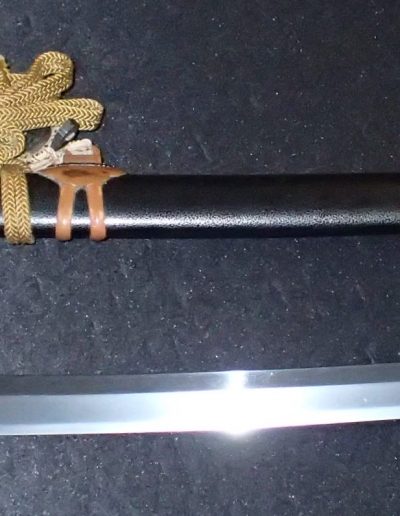Omi Daijo Tadahiro with NBTHK Tokubetsu Hozon Certificate mounted in Tachi koshirae. Mounted in shirasaya with Tanobe Sensei Sayagaki.
Sayagaki
肥前國近江⼤掾藤原忠廣
⼗⼆字⻑銘有之⼩糠肌ノ細緻ナ鍛ヘニ端正ナ帯状ノ直刃ヲ焼キ
姿形ト共ニ持チ前ノ品ノ良サヲ⽰ス優品也
⻑弐尺⼆⼨七分半有之
于時丙申始和
探⼭邉道識「花押」
Hizen no Kuni Ōmi Daijō Fujiwara Tadahiro
Jūniji naga-mei kore ari, konuka-hada no saichi na kitae ni tansei na obi-jō no suguha o yaki
sugatakatachi to tomo ni mochimae no hin no yosa o shimesu yūhin nari.
Nagasa ni-shaku ni-sun shichi-bu han kore ari Koretoki hinoe-saru shiwa
Tanzan Hendō shirusu + kaō
Ōmi Daijō Fujiwara Tadahiro from Hizen Province
[This blade] bears a twelve-character naga-mei, features a finely forged konuka-hada, is hardened in
a noble and belt-shaped suguha, and so this masterwork reflects with its shape all the qualities
and characteristic features of this smith.
Blade length ~ 68.9 cm
Written by Tanzan Hendō [Tanobe Michihiro] in January of the year of the monkey of this era
(2016) + monogram
TADAHIRO (忠広), 1st gen., Kan´ei (寛永, 1624-1644), Hizen – “Hizen no Kuni-jū Fujiwara Tadahiro”
(肥前国住藤原忠広), “Hizen no Kuni-jū Musashi no Daijō Fujiwara Tadahiro” (肥前国住武蔵大掾藤原忠広),
“Musashi no Daijō Fujiwara Tadahiro” (武蔵大掾藤原忠広), this is the late sinature of the 1st gen. Tadayoshi (忠吉)
after he received the honorary title Musashi no Daijō in Genna ten (元和, 1624), see “TADAYOSHI (忠吉), 1st gen.”
TADAHIRO (忠広), 2nd gen., Keian (慶安, 1648-1652), Hizen – “Hizen no Kuni-jū Fujiwara Tadahiro”
(肥前国住藤原忠広), “Ōmi no Daijō Fujiwara Tadahiro” (近江大掾藤原忠広), “Hizen no Kuni-jū Ōmi no Daijō
Fujiwara Tadahiro” (肥前国住近江大掾藤原忠広), “Hizen no Kuni Tadahiro” (肥前国忠広), “Tadahiro” (忠広), real
name Hashimoto Heisakurō (橋本平作郎), he adopted later the hereditary name Shinzaemon (新左衛門), son of the 1st
gen. Tadayoshi (忠吉) who had changed his name later to Tadahiro, he signed throughout his entire career with
Tadahiro and never with Tadayoshi, he received the honorary title Ōmi no Daijō on the 22nd day of the seventh month
Kan´ei 18 (寛永, 1641) and died in the 27th day of the fifth month Genroku six (元禄, 1693) at the age of 80, we know
date signatures from the seventh year of Kan´ei (1630) to the early Genroku era (1688~ ), that means he was active for
more then 50 years and therefore also very productive, his blades show different shapes like a wide mihaba with an ōkissaki or also a ko-kissaki in combination with a shallow sori, the jigane is a dense and beautifully forged ko-itame with ji-nie
which appears as konuka-hada but can also stand-out more noticeable, the hamon is a chū-suguha, notare mixed with gunome ashi, chōji-midare or gunome-midare, the nioiguchi is mostly wide and the ko-nie are very evenly distributed along the nioiguchi, in
the case of a chōji the yakigashira are roundish and long ashi appear, at a gunome, often two gunome are combined, the bōshi is
sugu with a ko-maru-kaeri but can also be in midare-komi, contrary to the 1st and 3rd gen., his kaeri runs back a little longer,
some blades show horimono engraved by Yoshinaga (吉長), the signature is a tachi-mei at long swords and a katana-mei at
wakizashi and tantō, katana measuring just under 2 shaku were considered as ō-wakizashi and were therefore signed with a
katana-mei, ō-wazamono, jōjō-saku


